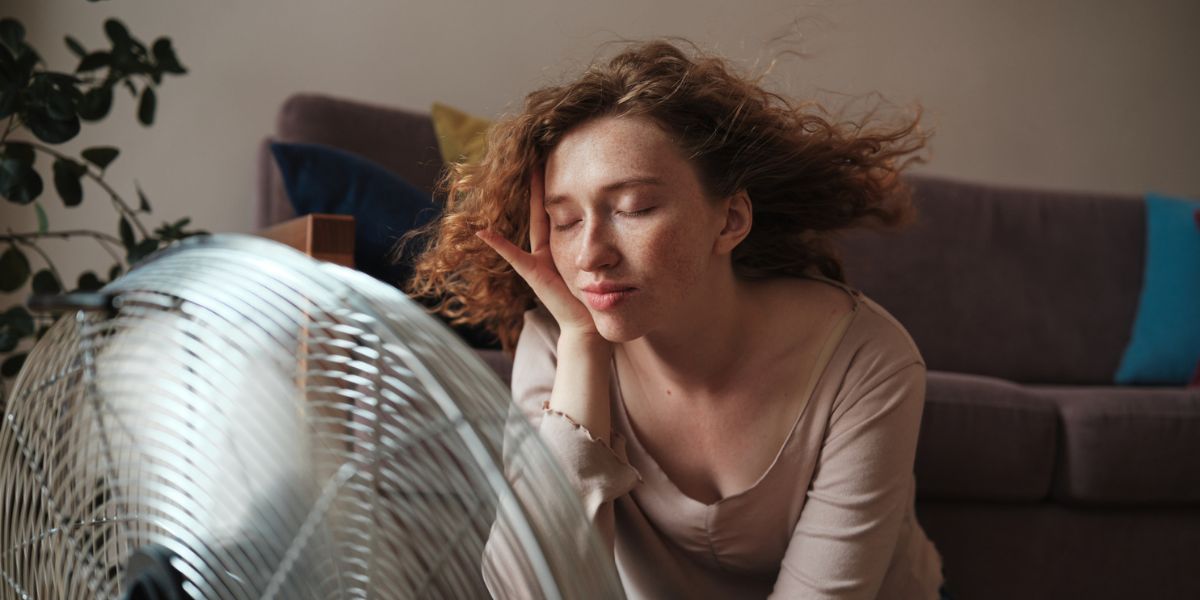As the summer fast approaches, the anticipation of sweltering heat is on everyone’s mind, however, many Australian houses are not equipped with adequate insulation. This lack of proper insulation can make homes unbearably hot, driving up energy bills as air conditioners and fans struggle to maintain a comfortable indoor environment. With the rising costs and environmental concerns associated with traditional cooling methods, finding alternative ways to keep our homes cool has never been more important.
1. Natural Ventilation
Natural ventilation involves the strategic opening of windows, doors, and vents to allow fresh air to circulate throughout your home. This method works best in the early morning and late evening when the outside temperature is cooler.
- Cross Ventilation: Open windows on opposite sides of a room or house to create a breeze that cools the indoor space.
- Stack Ventilation: Utilise high and low vents to encourage warm air to rise and exit from the top while cooler air enters from the bottom.
By harnessing natural airflow, you can reduce indoor temperatures significantly without any electrical consumption.
2. Shade and Insulation
One of the most effective ways to prevent your home from overheating is by blocking out direct sunlight and improving insulation. Radiative cooling allows homes to naturally release heat into the cooler night sky, reducing indoor temperatures without mechanical systems. Similarly, the Earth uses radiative cooling to emit infrared radiation into space, a process crucial for regulating global temperatures but increasingly disrupted by greenhouse gases.
- Use Curtains and Blinds: Thick, light-colored curtains or reflective blinds can block out a large amount of heat during the day. Blackout curtains are especially effective in bedrooms.
- Outdoor Awnings and Shutters: Installing awnings over windows or using exterior shutters can provide shade and reduce heat gain.
- Reflective Window Film: Apply reflective film to windows to block out solar radiation while still allowing light to enter.
- Insulation: Proper insulation in walls, roofs, and floors can significantly reduce heat transfer, keeping your home cooler in summer and warmer in winter.
3. Cool Roof Technology
- Reflective Paints and Coatings: These products can be applied to existing roofs to increase their reflectivity.
- Green Roofs: Installing a green roof with plants and vegetation can naturally cool your home by providing shade and through the process of evapotranspiration.
A cool roof can lower the temperature of your roof by up to 28°C (50°F), thereby reducing the amount of heat transferred into your home.
4. Evaporative Cooling Techniques
Evaporative cooling is a natural process where water absorbs heat from the air as it evaporates. Here are some methods you can use:
- Damp Cloths and Towels: Hang damp towels or place bowls of water near windows and doors to cool the air as it passes through.
- Indoor Plants: Certain plants, such as ferns and palms, can increase humidity and cool the air through transpiration.
- Water Features: Installing a small indoor fountain or water feature can help cool the air through evaporation while adding a pleasant ambiance to your home.
These techniques are especially effective in dry climates, where the air has a greater capacity to absorb moisture.
5. Strategic Landscaping
Planting trees, shrubs, and vines around your home can provide shade, reduce heat gain, and lower surrounding air temperatures.
- Deciduous Trees: Plant deciduous trees on the south and west sides of your home to block out the summer sun while allowing sunlight to warm your home in the winter.
- Vines and Trellises: Grow climbing plants on trellises or directly on walls to create a natural shade barrier.
- Ground Cover: Use ground cover plants or mulch to reduce heat absorption by the soil and lower the temperature around your home.
By incorporating smart landscaping, you can create a cooler microclimate around your house, reducing the need for mechanical cooling.
6. Night Purging
Night purging is a technique where cool night air is used to flush out the warm air accumulated during the day.
- Night Ventilation: Open windows at night to let in the cooler air, then close them in the morning to trap the cool air inside.
- Exhaust Fans: Use exhaust fans to pull warm air out of your home during the night, replacing it with cooler air.
This method is most effective in areas where temperatures drop significantly at night.
7. Ceiling Fans and Ventilation Fans
While this article focuses on alternatives to fans, it’s worth mentioning that ceiling fans and ventilation fans operate differently from standard fans and can be more energy-efficient.
- Ceiling Fans: These fans circulate air within a room, creating a wind-chill effect that makes it feel cooler without actually lowering the temperature.
- Whole House Fans: Installed in the attic, these fans pull cool air in through open windows and push hot air out through attic vents.
Although they use electricity, these fans consume far less energy than air conditioners and can be a cost-effective cooling solution.
8. Smart Home Technology & Measuring Temperature
Smart home technology, such as thermostats and temperature sensors, enables efficient management of indoor temperatures by optimising energy use based on real-time data. By measuring temperatures in different areas of your home, you can assess the effectiveness of various cooling strategies, identify hotspots, and adjust your approach to achieve optimal comfort. Integrating smart devices with regular temperature monitoring won’t directly cool your home, but it allows you to make smarter decisions, and even set up automations.
As global temperatures and wet bulb temperatures—where heat and humidity combine to create dangerous conditions—continue to increase, finding alternative cooling tactics becomes even more critical, especially for renters with limited options. By embracing strategies like natural ventilation, reflective window films, and smart home technology, renters can effectively manage indoor temperatures without relying heavily on expensive air conditioning.







